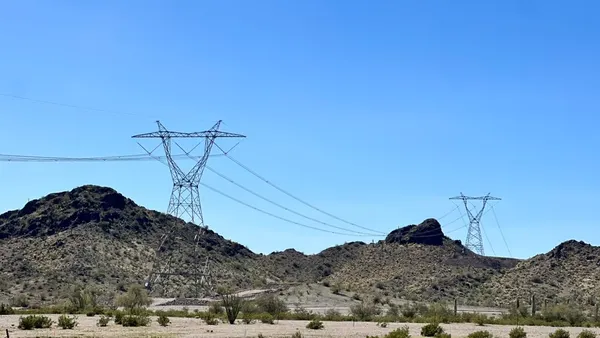Dive Brief:
-
The municipal utility that provides retail power and water services to the San Francisco government is considering the purchase of PG&E’s electricity assets in the city — part of a slate of options to deal with the impending bankruptcy filing of California's largest utility company.
-
The San Francisco Public Utilities Commission said on Twitter it is considering options to ensure reliable power service when PG&E files for Chapter 11 protections, "including possibility of acquiring or building electrical infrastructure assets," at the request of Mayor London Breed.
-
Public ownership of all or parts of PG&E is one potential avenue identified by California utility regulators last month to address billions of dollars in liabilities PG&E faces due to wildfire damages. The bankruptcy filing could also threaten some renewable energy contracts that developers hold with the utility, which could be dissolved.
Dive Insight:
The SFPUC's quick municipalization statement on Monday suggests one potential avenue to restructure PG&E, which could face up to $30 billion in liabilities associated with its role in igniting multiple deadly wildfires over the past two years.
San Francisco already has its Community Choice Aggregation program, which purchases clean energy from the open market but still relies on power lines owned by PG&E.
In a Monday statement, just hours after PG&E announced it would file for Chapter 11, the municipal utility said it is investigating the purchase of that power infrastructure, or building its own. The SFPUC currently provides water and sewer services to the city government, as well as hydroelectric and solar power to its municipal departments through the CleanPowerSF CCA.
At the request of Mayor @LondonBreed, we're studying impacts of a @PGE4Me bankruptcy & identifying options to ensure continuity for all #SF power customers—including possibility of acquiring or building electrical infrastructure assets. SF deserves clean, safe & reliable power.
— SF Water Power Sewer (@SFWater) January 14, 2019
Municipalization is only one potential avenue to reform PG&E. In December, California regulators laid out a variety of options to reorganize the utility in light of "serious safety problems with both its gas and electric operations," related to the fires and a 2010 pipeline explosion in the Northern California community of San Bruno.
Those include splitting the utility's transmission and distribution businesses, spinning off its natural gas service, divesting its power generation or reorganizing the company into regional subsidiaries.
PG&E said Monday that its bankruptcy filing will not affect reliable power and gas service, but has stayed quiet on reorganization options.
Procedurally, municipalization could be one of the more challenging reorganization options, as it would likely require extensive negotiations about which power assets would be purchased by the city, and at what cost. Debates with incumbent utility Xcel Energy about those issues have delayed municipalization efforts in Boulder, Colorado, for five years since voters approved a publicly owned utility in 2013.
Xcel, however, was not in bankruptcy protection, and faced little pressure outside of Boulder to reorganize. That could be different in California, where recent meetings of the state Public Utilities Commission have been disrupted by activists demanding public ownership of PG&E.
Whatever avenues California policymakers take to reform PG&E's structure, energy experts say they also must ensure major changes are made to PG&E's safety culture and practices.
As climate change fuels more powerful wildfire seasons, Stanford University's Michael Wara argues PG&E will find itself in the same financial position in the future if major changes are not made to reduce the risk.
In other words, we shouldn't focus too much on the $30 billion in #campfire and #tubbsfire liabilities. Instead, we should be focussed on an outcome where our communities, our first responders, and oh yeah, the utilities shareholders too, will never have to go through that again.
— Michael Wara (@MichaelWWara) January 15, 2019
Major changes to safety practices could come from the courts as well as state and local regulators. Last week, a U.S. federal district court judge recommended directing PG&E to inspect its entire electric grid before the start of wildfire season in June and "remove or trim all trees that could fall on its power lines, poles or equipment in high wind situations."
PG&E and other parties in the court case — which relates to the 2010 pipeline explosion — have until Jan. 23 to file arguments against the inspection directive and other safety modifications in the court order. A hearing will be held Jan. 30.
Correction: An earlier version of this post mischaracterized the SFPUC. It is a municipal utility.













